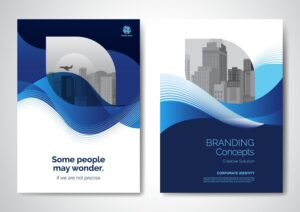 Introduction
Introduction
In today’s competitive market, a visual branding strategy plays a critical role in defining how your business is perceived. From your logo to typography, colors, and imagery, every visual element influences customer emotions and brand recall. Companies that invest in a powerful visual branding strategy create stronger customer connections and build lasting brand recognition.
If you’re looking to create a visual identity that stands out, understanding the latest approaches in visual branding strategy is essential.
What is Visual Branding Strategy?
A visual branding strategy is the process of designing consistent visual elements that communicate your brand’s story and values. It ensures that every touchpoint—website, social media, packaging, or advertisements—looks cohesive and instantly recognizable.
Key Elements of a Visual Branding Strategy:
-
Logo design: The face of your brand.
-
Color palette: Shapes emotions and conveys values.
-
Typography: Establishes tone and readability.
-
Imagery & graphics: Reinforces your brand narrative.
-
Consistency: Ensures familiarity and trust.
Why Visual Branding Strategy Matters
Consumers form impressions within seconds, and visuals dominate these decisions. A strong branding strategy not only attracts attention but also fosters trust and loyalty. It:
-
Differentiates your brand from competitors.
-
Creates emotional connections with your audience.
-
Builds brand recall, driving repeat engagement.
For example, leading Indian brands like Amul and Tata use consistent visuals that strengthen their identity across generations (learn more).
Steps to Build an Effective Branding Strategy
1. Define Your Brand Personality
Your visuals should reflect who you are. Is your brand modern, playful, luxurious, or eco-conscious? Defining personality ensures visuals align with your message.
2. Create a Memorable Logo
Your logo is the cornerstone of your branding strategy. It should be versatile, scalable, and aligned with your values. A custom logo design ensures uniqueness and professionalism.
3. Choose a Consistent Color Palette
Colors evoke emotions. For example, blue conveys trust, while green represents growth. Select 3–5 core colors and apply them consistently across all platforms.
4. Typography Matters
Fonts are as powerful as visuals. Minimalist or bold typefaces can set the tone for your brand voice. Consistent typography helps in creating brand familiarity.
5. Use Imagery that Tells a Story
Visuals should connect emotionally with your audience. Invest in high-quality photos and graphics that align with your brand’s story.
6. Stay Consistent Across Platforms
Consistency is the backbone of a visual branding strategy. Whether it’s your website, social media posts, or marketing materials, keep your visuals aligned.
Benefits of a Strong Branding Strategy
-
Boosts brand recognition.
-
Creates trust and credibility.
-
Improves customer loyalty.
-
Enhances marketing effectiveness.
When executed correctly, a branding strategy becomes a silent ambassador of your business, speaking volumes without words.
Conclusion
A strong branding strategy is more than just attractive design—it’s about creating a lasting identity that resonates with your audience. By investing in cohesive visuals, businesses can build trust, stand out in crowded markets, and foster long-term relationships with customers.
If you’re ready to develop or refresh your brand visuals, connect with professionals who understand design and branding deeply. Contact us here to build a strategy that elevates your brand identity.
Explore more related articles to deepen your understanding
Best Fonts for Branding: Create a Lasting Visual Identity
SEO Content Writing: A Complete Guide for BeginnersDoes Google use Cloudflare
Content Writing Basics: A Beginner’s Guide to Effective Writing







